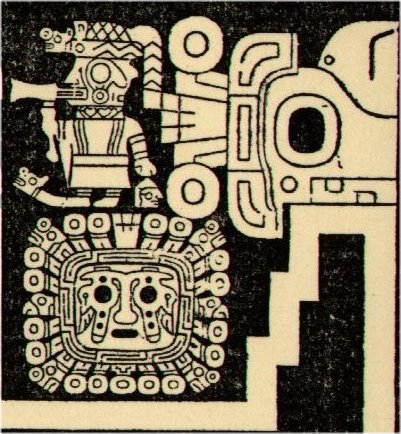1. The planets are not fixed on the sky roof, they move along the band of the ecliptic. When they were given a location in the Babylonian zodiac it was not to point out their permanent residences:
The sign of Mars is at the tail of the Goatfish and the sign of Jupiter is at the head of the Lion. These positions presumably identify zodiacal signs with corresponding characteristics. Mars is the young vital Sun and Jupiter is the old Sun moving slowly, close to summer solstice. Mars is 'born' at new year and his rule should begin at the tail of the Goatfish. Possibly Jupiter is at the head of the Lion because this is the time when the Sun king will loose his head:
The sign of Saturn (together with a sign which probably indicates water) is at autumn equinox. The rule of Saturn seems to begin here and end at winter solstice. Between midsummer and autumn equinox is the sign of Mercury, low down and in the sign of Virgo (Furrow and Frond). The sign of water has a pair of rings with a dot in the center, and this could be a picture of an object dropped into the water with the resulting rings. ... The hero then hid in a meat sack, jumped on the Trickster and killed him. The corpse was cut up and the pieces scattered. However, the Trickster came back to life. He went away and stopped to rest by a lake, and meditated on death: should death be final or not? On seeing that a stick, then a buffalo turd, and lastly a piece of pith remained afloat after he had thrown them into the lake, he opted for resurrection. However, when a pebble sank, he reversed his decision. It was better that people should die, he concluded, otherwise the earth would quickly become overpopulated. Since that time, people only live for a certain period and die for ever ... When Saturn is in the House of Saturn he has man by the throat: ... With Capricorn it [Aquarius] was the House of Saturn, governing the legs and ankles; and when on the horizon with the sun the weather was always rainy. When Saturn was here, he had man completely in his clutches - caput et collum; while Jupiter, when here, had humeros, pectus et pedes ... It could refer to how at the end of the other cycle, at winter solstice, someone else than Sun would loose his head: ... in the ceremonial course of the coming year, the king is symbolically transposed toward the Lono pole of Hawaiian divinity ... It need only be noticed that the renewal of kingship at the climax of the Makahiki coincides with the rebirth of nature. For in the ideal ritual calendar, the kali'i battle follows the autumnal appearance of the Pleiades, by thirty-three days - thus precisely, in the late eighteenth century, 21 December, the winter solstice. The king returns to power with the sun. Whereas, over the next two days, Lono plays the part of the sacrifice. The Makahiki effigy is dismantled and hidden away in a rite watched over by the king's 'living god', Kahoali'i or 'The-Companion-of-the-King', the one who is also known as 'Death-is-Near' (Koke-na-make). Close kinsman of the king as his ceremonial double, Kahoali'i swallows the eye of the victim in ceremonies of human sacrifice ... The distance from the Great One to Eridu is ca ⅓ of the cycle, ending at midsummer. In the other cycle ('the other ear of the amphora') the distance is ca ⅓ from Mercury to winter solstice, i.e. the patten is a mirror image of what is illustrated for the 'Sun' cycle. Perhaps it means Mercury is the son of Saturn in the same way as Mars could be said to be 'the son of Sun'. |

